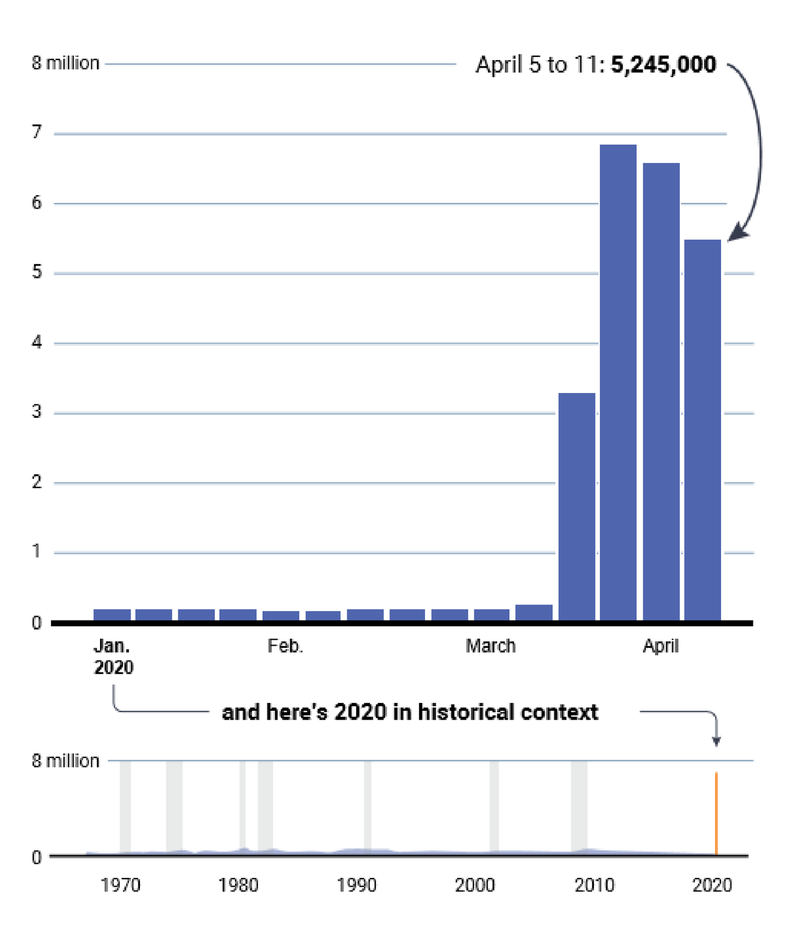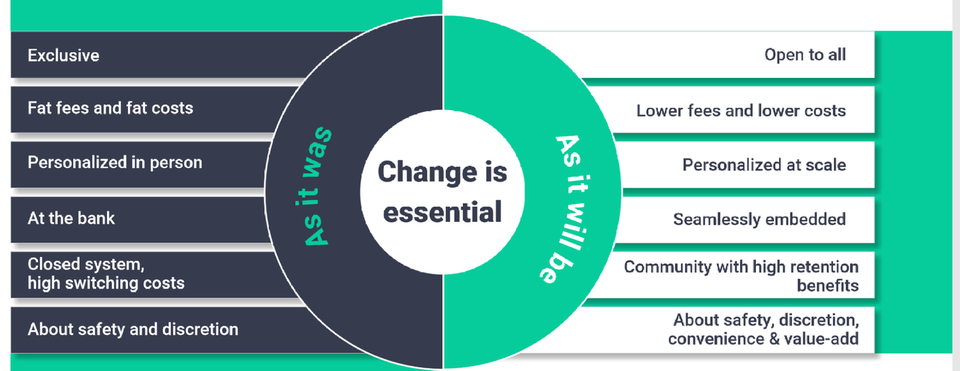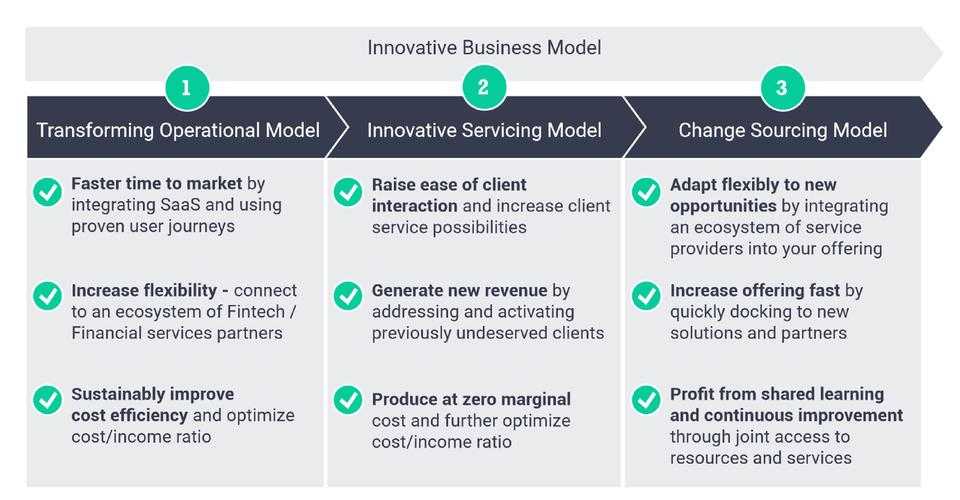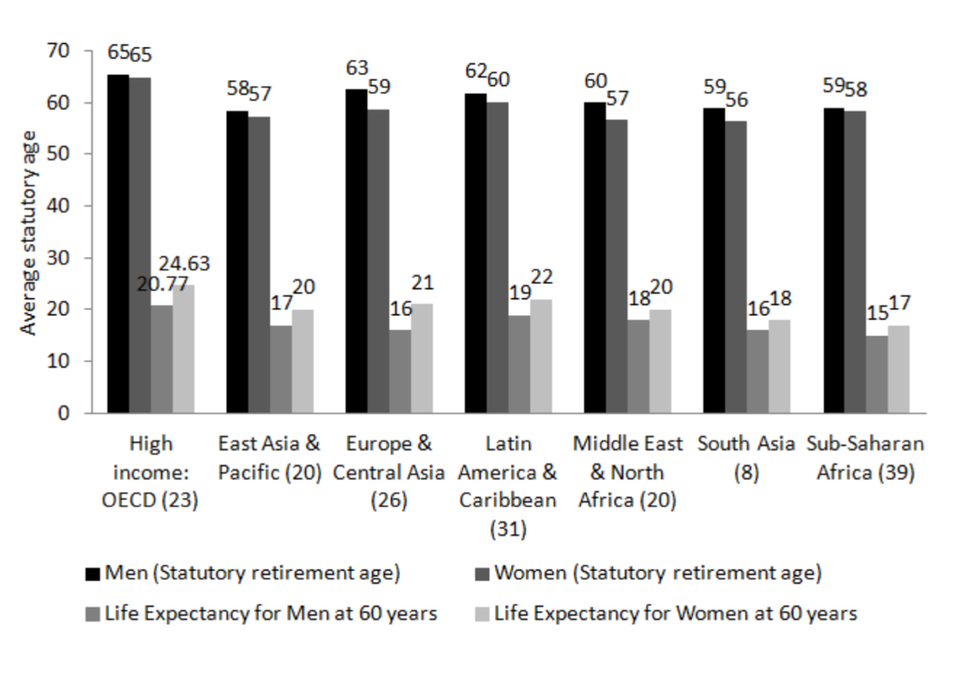There’s much debate on how the financial system will absorb and react to the impact of COVID-19. There are many potential recovery scenarios, but the best case is the V shape. This is where output quickly returns to (slightly below) pre-crisis levels thanks to pent-up demand combined with extensive financial stimulus. Alternatively, there is the less optimistic U-shaped outlook. This is where the recovery process is gradual and extends well into 2021 and beyond. It involves a slower - yet foreseeable - revival, especially in industries reliant on intense human interaction.
Should the virus make a comeback at any point during this recovery – and until a vaccine becomes widely available – there is always the risk of a dispiriting re-start of the cycle (W-shaped recovery) that can lurch the world back into recession. The sobering truth is that no one knows how the rebound might unfold. Accepting reality is just as important as identifying the vast opportunities that shape its future.
Economic impact in the short and mid-term deepens financial inequality
We might not know how long this crisis will last, but we can expect its longer-term implications to ripple through the next decade. That’s because one of the main forces that emerges from - and shapes - the financial sector and society at large is expected rising inequality.
As an example, the US reports their highest unemployment rates since the Great Depression. Analysts from the Centre for Economics and Business Research expect the US GDP to drop twice as as much than during the 2009 crisis and become the largest fall in one year since 1931. Deploying fiscal and monetary stimulus to revive the economy could make the difference between a V-shaped and an U-shaped recovery, but the world needs more than that. Additional, inevitable changes must contribute to economic recovery.
The steep income gap will be persistently visible throughout all these transformations because this particular virus appears to spread more across lower income groups living in closer proximity to each other and often suffering from pre-existing health conditions. This being the case, already wide disparities in income and wealth are likely to grow during the course of this pandemic.
Wealth inequality might deepen in most developed nations, leaving the poorest individuals increasingly at risk. This will become an essential factor that fuels social instability, especially during longer recessions and as Branko Milanovic points out, where the risk of societal collapse is elevated, governments should not forget that “the most important role economic policy can play now is to keep social bonds strong under this extraordinary pressure.”
US initial claims for unemployment insurance in 2020

Note: Seasonally adjusted
Source: Labor Department, The Washington Post
Heightened perception sharpens what society needs from the financial sector
The pandemic makes everyone painfully aware of the cascading effect financials have on the world. This heightened perception changes what society needs from the financial sector in three major ways.
1. An altered perception of risk
As a fundamental concern, funding or cash flow liquidity risk will bear a stronger influence on how companies across sectors shape their path forward. To support the economic rebound, organizations and financial institutions have to work together closer than they’ve ever done.
Banks will need lending and liquidity solutions that help them - and the private sector - to withstand this stress test. Financial players will need the intelligence of a unified perspective of their customers. As risk awareness amplifies, the value of security soars. Partnerships and technology are essential for managing and reducing risk by providing a unified data model that enables stronger decision-making.
2. Increased focus on ESG
The needs of people around the world have dropped short term to the bottom of Maslow’s hierarchy. We can already see how the extensive need for the basics (food, shelter, employment, healthcare - and the means to provide them) is triggering ESG (Environmental, Social, and Governance) actions.
Through intentional Sustainable Finance, a new definition for prosperity can be forged. This new paradigm could be rooted in the principles Kate Raworth advanced in her book: Doughnut Economics. Here she highlights that as heightened perception changes tolerance to risk and priorities change, ESG actions become more influential across the board. Sustainable Finance can help to offset some of the vulnerability that we’ve become acutely aware of - from our health to our supply chains and even in funding.
“Economics that helps us to live within the doughnut would seek to reduce inequalities in wealth and income. Wealth arising from the gifts of nature would be widely shared. Money, markets, taxation and public investment would be designed to conserve and regenerate resources rather than squander them. State-owned banks would invest in projects that transform our relationship with the living world, such as zero-carbon public transport and community energy schemes. New metrics would measure genuine prosperity, rather than the speed with which we degrade our long-term prospects.”
Source: Doughnut economics: an ecosystem-based view of sustainable growth
3. Demands for a redistribution of wealth
This series of transformations - some sequential, some simultaneous - is bound to bring about a clear ask for a redistribution of wealth. The risk here is that wealthy segments of the population might see a reduction in their assets, while the poor run no chance of becoming richer - but rather surviving.
Let’s look at the Great Depression to see what history taught us, albeit in much different circumstances.
In the current economic paradigm, a similar crisis (the prolonged U-shaped recovery) could involve a steep drop in asset prices at a global level, given how connected financial markets are. Inflation - while at the moment more deflationary tendencies prevail due to the consumption shock - might follow as a consequence of changes in the supply chain and reduction in free global trade as food becomes more expensive and less abundant - also because of global warming. More central influence is also likely to materialize, as governments urge financial institutions to cut dividends, central banks keep rates at a record low, and higher taxes come into force.
A passage found within a letter to G20 governments echoes an idea that supports our belief that we may need to start tweaking the system more substantially.
“Between 1911 and 1949 the income share of the top 1% fell by 62%. This was partly because of inflation, which forced asset holders to sell up to maintain their lifestyles, and partly because of falling asset prices, but also because of rent controls, which forced residential property sales at low prices, and downward pressure on dividends and interest (the dominant part of unearned income).”
The accelerating pace of change
The pace of change pre-pandemic was rapid, but there’s no reason to think these trends won’t accelerate post-pandemic. In a Darwinian sense, the companies that are faring best are those that are either digitally-native or have invested the most in digital. These companies will take market share at the expense of all other companies and, in turn, raise the level of digitalization across the economy.
We can also see how many of the corporate, social, and regulatory impediments to change are being swept aside by the overpowering force of the current situation, in turn driving innovation.
Take e-commerce, for example: the pandemic has brought forward the projected level of e-commerce activity by 5 years according to Mercatus, with retailers in the US seeing a 1,200% increase in online shopping account registrations in March.
The same thing is happening with working from home. Formerly the realm of freelancers and corporate employees too hungover to come to work on Fridays, remote working has become mainstream overnight (Zoom has gone from 10m daily users to 200m daily users since the start of March!).
Similarly, many countries quickly removed regulatory restrictions around telemedicine to allow remote consultations between people and their doctors during the pandemic. This quote from a New York Times article sums it up pretty well:
“We’re basically witnessing 10 years of change in one week,” said Dr. Sam Wessely, a general practitioner in London. “It used to be that 95 percent of patient contact was face-to-face: You go to see your doctor, as it has been for decades, centuries. But that has changed completely.”
As we all getting used to convenient, fast and, low-cost digital services, it’s difficult to see how these trends won’t accelerate – let alone go into reverse - post-pandemic.
The implications for wealth management
Like in many other industries, the rate of digitalization in wealth management has accelerated markedly as an effect of the pandemic. This clearly requires wealth managers to adapt their operating, servicing and sourcing models. However, the pandemic has wider ramifications that tie into changing customer and societal needs.
Digitalization in wealth management was gradual until it was sudden
Pre-crisis, most wealth managers and private banks were working through 3 or even 5-year digitalization plans.
There were certainly some ripples of digitalization. Younger clients especially liked the convenience and autonomy of self-service portals. Some new entrants were generating noise and making life a bit difficult at the lower end of the market. Fee income was under pressure as well. But, in general, while not golden years, profitability was flat to marginally up driven by cost reductions and, most importantly, there was time – and money – to invest in digitalization.
Digital Wealth Management

Source: additiv
With the pandemic, the situation has changed.
From one day to the next, physically meeting with clients became impossible, which demanded a rapid change in servicing models. In the meantime, markets were extremely volatile and clients needed advice and reassurance. Simultaneously, financial institutions’ workforce was sent home which meant running the company with everyone working remotely. That marked the onset of a fundamental and mandatory rethink in their operating model. Suddenly, digitalization was no longer a 5-year roadmap item.
Fast action required at a time when firms are least well equipped for it
Budgets for digitalization investments won’t be free-flowing, at least not without reprioritization. What is most likely happening in most institutions is a risk of freeze on all new projects until the economic climate improves or until hope of a recovery emerges.
Nonetheless, wealth managers will need to find a way to invest in, and accelerate, digital roadmaps. One option is to revisit existing projects and stop many in favor of digitalization. Another- better - option is to do this in conjunction with undertaking smaller projects which can be pushed into production quicker, with a more predictable return on investment. Whatever the route, it’s clear that digital projects cannot be postponed until after the economic crisis.
Wealth managers need to look and invest through the cycle to be ready for what is on the other side, which won’t be a return to normal so much as moving towards a new normal.
What is digital Wealth Management?
Well, while we might not know the shape of the recovery or the length of crisis, we do know the future of wealth management will almost certainly be (more) digital.
In our perspective, this goes far beyond just providing the same products and services over a digital channel. We see digital wealth management as a transformation of a bank’s or wealth manager‘s business model because it allows them to capitalize on the native properties of digitalization. Two notable opportunities stand out: the ability to produce at near zero marginal cost and the capacity to gather and process a significantly larger amount of data about customers to personalize services - and do so at scale. Our three pillars of business model innovation illustrate this approach.
The 3 pillars of business model innovation

Source: additiv
With this in mind, we think that digital wealth management can - and should – be opened up to a much larger demographic segment of customers. By lowering the fees attached to wealth advice, we believe the addressable market could expand from the 500 million people who have a personal wealth manager today to the 1.8 billion people who have more than US$10,000 in investable assets.
The service becomes more personalized - for everyone. With more data and content, ideas and personalized ideas will become more relevant. More importantly, wealth managers will be able to create portfolios that are exactly matched to individual needs, complete with specific and granular risk profiles. Constant optimization enables them to retain this level of personalization throughout their evolution.
The sourcing model will change too. To retain clients and give them a constantly improving value proposition – at scale – wealth managers will need to combine own-label products and services with those of third-party ones. Further technology will allow financial providers to source solutions and to relabel as happened already in payments. This will enable them to offer a broader range of services – helping customers make smarter commercial and financial decision across greater ranges of their financial lives. At the same time, it will enable wealth managers to innovate faster by crowdsourcing services.
All in all, the value proposition of wealth managers will shift, which will require a reboot of the business model. Safeguarding assets with discretion will no longer be enough. Safeguarding will come to include assets and data. Convenience will take centre stage as customers expect the same frictionless service they get from all digital services. And, lastly, there will be more focus on added value: the personal advice, the financial literacy, the education, and the asset performance.
What does post-pandemic digital wealth management look like?
Better advice, more transparency
We will have a greater sense of having passed through a collective experience with more concern for our society and our environment. People will need more of a helping hand in the immediate aftermath of the crisis. In the mass affluent space, wealth managers will differentiate themselves if they can provide access to affordable loans as well as help customers make better savings and budgeting decisions. We expect financial advice and solutions interlinked with employers’ human resource systems to grow in importance. Responsible employers will increasingly get involved in the financial wellbeing of their staff.
There is also the massive wealth inclusion opportunity in South-East Asia and Africa. Wealth is growing significantly, but to address this growing need for financial management, providers will need to deliver the right services – simple, transparent, low cost – over the right channels: mobile channels and super apps.
New services aimed at decumulation of assets
Simple, low cost, and highly personalized automated investment portfolios will continue to grow in importance, both as a share of customers but also as a share of assets. People will turn increasingly to automated professional advice for accumulating retirement assets, but their tolerance for fees will be lower. As such, providers that offer demonstrably better-performing automated investment services will take the lion’s share of the market.
Average statutory retirement age and life expectancy by region

Source: SSA (Social security programs throughout the world) and WHO
The gap in the market for wealth decumulation services will quickly get filled. Most wealth managers have focused on the wealth accumulation market and there have been few solutions aimed at the decumulation of assets – helping retirees draw down their assets in a structured way. However, this is a massive market opportunity and a pressing need.
The World Bank expects a US$400 trillion shortfall in pension assets as a result of ageing populations, lack of reforms and low interest rates and, if the pandemic induces a protracted economic slowdown, this is likely to look much worse. So the burden will fall increasingly to individuals to set aside the assets for retirement and then to make them last. Along with traditional wealth managers and asset managers, insurance companies are also well positioned to provide these services to complement wealth planning services they already offer.
Risk and wealth preservation
One of the factors that is already playing out mid-crisis is a flight to quality. Banks need to prepare for how “quality and trust” might increasingly be perceived in future.
In a digital world, the perceived safety of a bank is determined much less by the size of its balance sheet or the strength of its physical vault. Instead, the robustness of its cyber defenses and its ability to shield customers from cyber-criminals will matter more. Moreover, and paradoxically, all the physical manifestations of safety – the skyscrapers, the vaults, the billboards – may actually come to undermine the perception of safety if they keep costs and fees high and erode customers’ capital.
Much maligned by Anand Giridharadas in his book, “Winners Take All”, we can expect the super-rich to double down on creating and supporting foundations. These lower the tax effect on wealth, both directly, through lower taxes, and indirectly, by building goodwill.
In addition, foundations help these individuals create significant influence which can be used to further their personal influence. However, in all cases, foundations will just be used to give to and invest in good causes supporting society and protecting the planet.
Alongside this proliferation in foundations, expect private banks and wealth managers to expand their foundationsupporting business practices. These will entail helping the super-rich to structure and manage these foundations, as well as help find ESG opportunities to invest in, most of which will be non-listed securities and proprietary projects.
A full shake-up: moving from assets under management to assets under intelligence
The societal and business impact of the pandemic will be widespread. Even though we don’t yet know its shape, the pandemic will produce a sharp recession. But recessions are nothing new. It is the broader implications of the pandemic that we have looked at in this report. Expect, for example, that matters related to rising inequality will gain in importance, prompting a call for greater wealth redistribution as well as a move to measure the societal and environmental impact of policy decisions.
For wealth management, we can expect a rapid acceleration in the rate of digitalization. As we explored, this means much more than just providing wealth management through digital channels. It entails a reappraisal of the servicing, sourcing, and operating models to deliver greater quality at scale, which will mean more plentiful and personalized access to wealth planning for society at large.
We can also expect the bundle of wealth services to change and grow. There will be more focus on education and planning. New services will add to the current offer, especially around helping clients to draw down their wealth in a structured and optimized manner. And there will also be a different interpretation of risk, with cyber defenses becoming more critical than physical defenses, for example.
If we had to point to one meta trend in wealth management, it would be the move from assets under management to assets under intelligence.
Post-pandemic wealth management will be characterized by firms’ abilities to add value to clients by interpreting and drawing insight from multiple datasets to deliver services that are more personalized, more helpful, more optimized for risk, and which deliver stable and high returns against their financial goals. And it’s all happening at once.
For more information on this subject please visit www.additiv.com.
Contact Us
About additiv
Established in 1998, additiv partners with the world’s leading financial institutions to help them capitalize on digitization. Its market-leading DFS is an orchestration engine that lets financial institutions quickly launch new propositions as well as giving them the intelligence to maximize customer engagement. Headquartered in Zurich, additiv is supported by a broad ecosystem of implementation and solution partners that enable it to deliver unparalleled customer success to wealth managers and credit providers globally.

